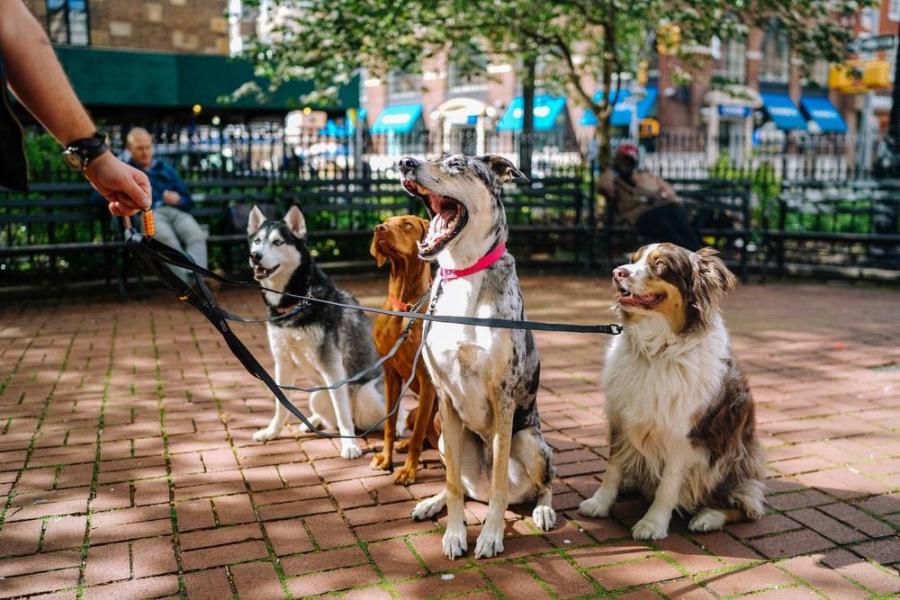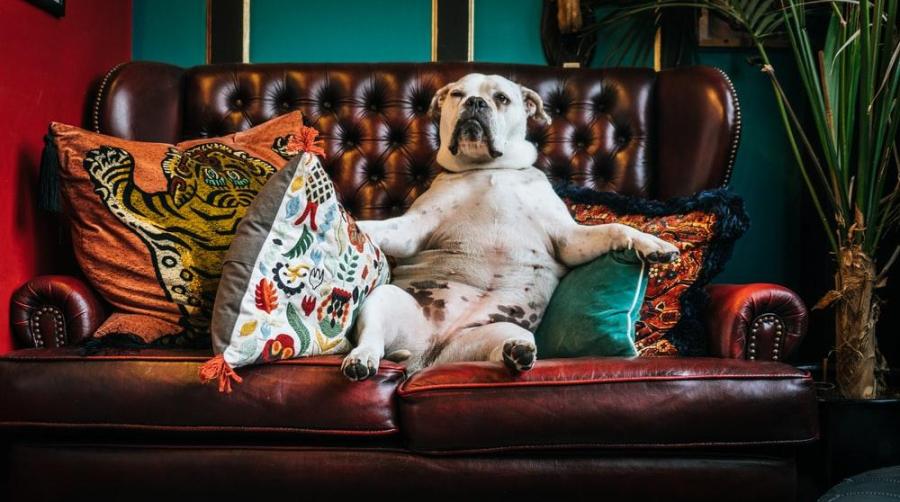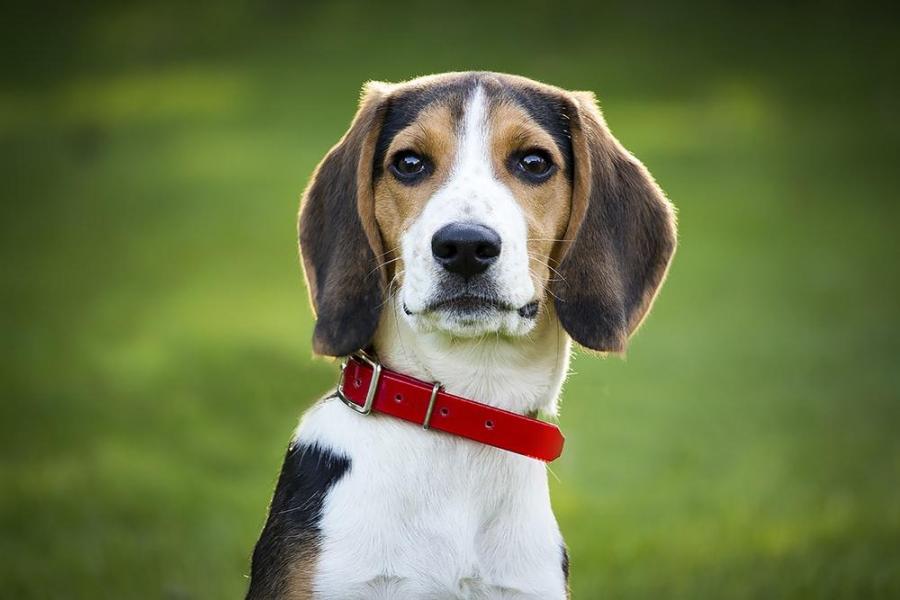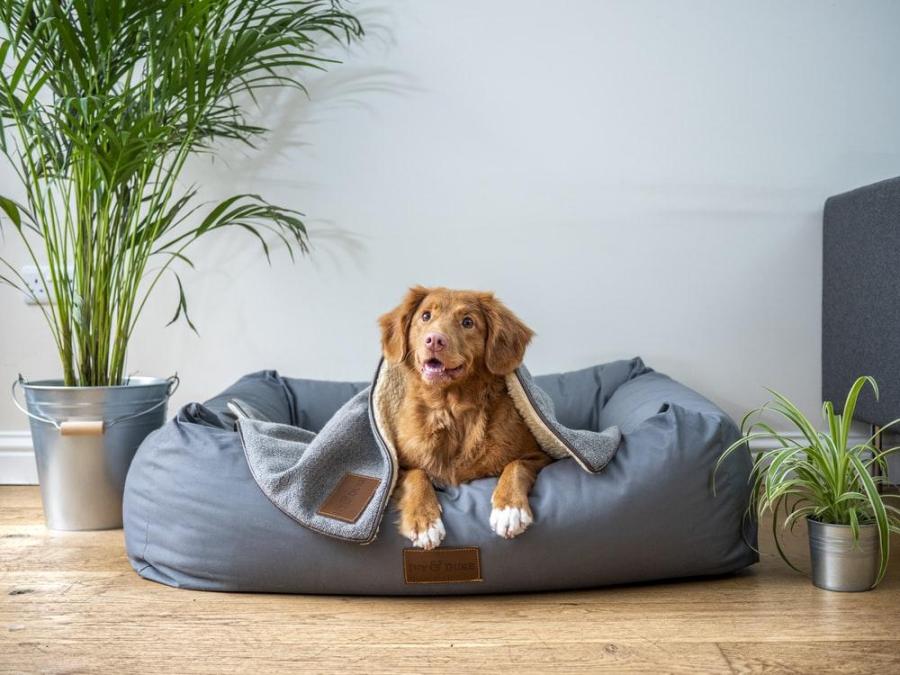What Kind of Dry Dog Food Should I Feed My Dog With Few Teeth
Most of us are well aware of the importance of dental hygiene, so we brush our teeth at least twice a day and floss just as much. But even though we may be educated about human dental health, plenty of dog owners don't realize they should be brushing their dog's teeth too.
Indeed, the myth that your dog's teeth will "clean themselves" is actually false. While it's true that your dog's teeth aren't susceptible to the same kind of plaque or bacteria as our teeth (since they don't eat as many processed foods or sugary sweets!), they still need to be cleaned from time to time.
Fortunately, brushing your dog's teeth isn't too difficult. It's essentially the same process as cleaning your own! But if you don't know where to start, this guide can help. We'll break down everything you need to know about dog teeth cleaning, plus give you some pointers so you can clean your pup's teeth comfortably. Have more questions on how to take care of your best friend? We've got the answers. But for now, let's dive into this guide!
Why Brush Your Dog's Teeth?

It's simple; you need to clean your dog's teeth for the same reasons you have to brush your own. Left unchecked, your dog's teeth will gradually accrue plaque and bacteria, which can cause all kinds of dental problems.
Plaque leads to bacterial infections, which can eventually turn into rotten teeth or gum infections like gingivitis. But unlike us, dogs can't brush their own teeth – so we have to do it for them!
However, brushing your dog's teeth isn't exactly the same as brushing your own. There are specific tools to use and some smart tips to follow so your dog is comfortable each time you brush their pearly whites.
Overall, brushing your dog's teeth is a great habit to pick up while they are still a puppy. It'll get them used to the process and help prevent long-term dental problems down the road so that your pup can stay healthy and happy for much longer.

Not sure how to start brushing your dog's teeth? Not to worry – we've got a tried-and-true method you can follow below.
When to Brush
The number one thing to cultivate when brushing your dog's teeth is calmness. Dogs don't usually like it when things are put in their mouths without their permission, so you need to create a calm environment so they don't try to squirm away or prevent you from brushing their teeth thoroughly.
Choose a time of the day when your dog isn't usually running around, such as in the evening and after dinner. Then sit in the living room or in some other open space and have your dog come sit in your lap. If your dog is a puppy, practice getting them to sit calmly in your lap by using treats and rewarding them every time they do what you want.
After you've got this down, you can start practicing putting a dedicated dog toothbrush in their mouth, Again, give your dog some treats and work up to this progressively. Your dog will eventually be more than happy to take a toothbrush into their mouth if they've been rewarded with treats enough times.
What to Use
Speaking of which, always use a dog-specific toothbrush. These can be found at most major pet stores. They're different from human toothbrushes since they have longer handles with a curve that allow you to reach your dog's back teeth.
Similarly, always use dog-specific toothpaste. Human toothpaste often has ingredients that are toxic to dogs, so never use a pinch of your own toothpaste if you run out. It's better to brush your dog's teeth with a dry brush instead.
Dog toothpaste can be found in all kinds of flavors, such as chicken or fish. Try a few different types of your dog likes.
Brushing Technique
When you've got your dog toothbrush, toothpaste, and your pup sitting in your lap, you can start brushing. To do this, open your dog's mouth and touch the toothbrush to the teeth – do this gently at first. Then carefully move the brush back and forth, praising your dog from time to time and rewarding them with a treat if necessary.
If you need to, let your dog taste the toothpaste by putting a little bit on your finger and letting your dog lick it off. This will acclimate them to the new taste and prevent them from feeling overwhelmed. Then:
- Brush your dog's top teeth first. Hold their upper lip back with your index finger.
- Brush their bottom teeth next, holding the lip back as well.
- Be sure to brush the sides and back teeth, as those teeth are often used for grinding food down and can get lots of little food bits stuck in between.
You can try brushing your dog's tongue, but they probably won't like it very much. Don't worry so much if this is the case for your canine. The most important thing is to clean their physical teeth regularly. Their tongue will be much cleaner on average since dogs salivate a lot during the day.
How Often Should Your Dog's Teeth Be Brushed?

In general, it's a good idea to brush your dog's teeth as frequently as possible. You can aim for a regular schedule of once per week if your dog is still getting used to having their teeth brushed. But as they become more used to it, try to increase this frequency to once per day.
When brushing your dog's teeth regularly, be sure to do so at the same time and at the same place every day. This builds up a positive routine that your dog will get used to and eventually come to expect, making your job much easier.
However, speak to your veterinarian about toothbrushing frequency. They may recommend more or less based on your dog's dental health.
What About Professional Cleaning?
Your dog's teeth will likely be professionally cleaned when they visit a veterinarian for their yearly checkup. During these appointments, the vet will thoroughly clean your dog's teeth and gums and get rid of any bacteria that you aren't able to reach with your regular toothbrush sessions.
Don't worry about taking your dog to a professional cleaner's appointment all that often unless recommended otherwise by your veterinarian.
Dog Teeth Cleaning Tips
- Always use a toothbrush specifically designed for dog teeth.
- Never use human toothpaste.
- Let your dog get used to the toothbrush and toothpaste at first instead of overwhelming them with the full routine in one night.
- Brush with gentle motions. Don't try to scrape your dog's teeth too hard, as this can cause discomfort and make your dog distrust the entire process.
- If your dog doesn't allow you to brush the inside surfaces of the teeth, don't worry. It's most important to get them outside or cheek-facing surfaces.
- Always reward your dog by giving them a treat or playing one of their favorite activities afterward, so they associate brushing with positivity.

With some dogs, it doesn't matter how hard you try or how many treats you use: they just don't like toothbrushing whatsoever.
If that's the case for your pup, no need to worry. There are alternatives you can use to clean your dog's teeth instead. Here are some examples.
Tooth Wipes
Tooth wipes are exactly what they sound like – they're disposable wipes you can rub against your dog's teeth to remove excess plaque. The downside is that they can't get into the gaps or spaces between your dog's teeth like a toothbrush. But they're better than nothing and are much gentler than even the softest toothbrush's bristles. Use these if your dog is particularly sensitive to toothbrushing.
Dental Treats
There are plenty of healthy dog dental treats on the market these days. Dog dental treats have ingredients that can freshen the breath and remove bacteria from your dog's mouth while also being tasty. You can either use these as an alternative to toothbrushing or give your dog some dental treats after a toothbrushing session to reward them and get some bonus cleaning and at the same time.
Chews
Almost all dog chews, ranging from antlers to pig ears to bones, are great secondary dental products for your dog. When your dog chews on a hard object, plaque naturally scrapes off and eventually gets digested instead of sitting on the teeth.
You can find dental hygiene-specific chews or just give your dog an extra bone every day. Again, you can add this to the end of a toothbrushing session to reward your dog and reinforce positive dental health.
Summary
All in all, cleaning your dog's teeth isn't that tough once you look at the details and get the necessary supplies. However, it's important to maintain a good toothbrushing routine with your dog if you want them to enjoy healthy teeth all the way into old age.
If you have questions, ask your veterinarian about specific products they might recommend or practices for your pup in particular.
Sources
Toothbrushing Steps To Make Dog Teeth Dazzle (akc.org)
How to Brush Your Dog's Teeth (webmd.com)
Keep Your Dog's Teeth Clean With Five Tips (akc.org)
Source: https://www.reference.com/pets-animals/the-dog-teeth-cleaning-guide?utm_content=params%3Ao%3D740005%26ad%3DdirN%26qo%3DserpIndex&ueid=9c7f913e-c5e5-4feb-af94-298a144e09b0
0 Response to "What Kind of Dry Dog Food Should I Feed My Dog With Few Teeth"
Post a Comment